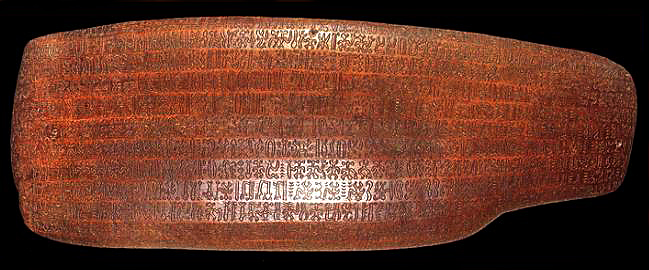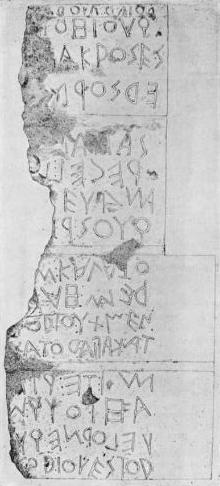Boustrophedon is a style of writing in which alternate lines of writing are reversed, with letters also written in reverse, mirror-style.

The original term comes from Ancient Greek: “like the ox turns [while plowing]”. It is mostly seen in ancient manuscripts and other inscriptions. It was a common way of writing on stone in Ancient Greece.
A fun variation is the reverse boustrophedon: the text in alternate lines is rotated 180 degrees rather than mirrored.
The reader begins at the bottom left-hand corner of a tablet, reads a line from left to right, then rotates the tablet 180 degrees to continue on the next line from left to right again. When reading one line, the lines above and below it appear upside down.

I heard about it on a podcast about the Rapa Nui people of Easter Island. They use used the reverse boustrophedon style for their system of glyphs called Rongorongo, which remains undeciphered.

There is a certain elegance to this kind of writing. I was surprised how easy it is to read. Maybe I have an advantage because I’ve always made it a little mental game to read mirrored text when I see it either in an actual mirror or from the wrong side of a clear pane of glass. The utility of the ox turn method seems to shine when the inscription is on a tablet that can be held and turned in one’s hands.
Are there any scripts in which all the characters are symmetrical across the vertical axis? So that, when written like this, the letters would be the same either way.
Edit: oh wait, I know one! Ogham, from medieval Ireland. There is one character that’s not symmetrical, but it’s apparently one of the five “additional” characters that do not appear in the majority of known examples of ogham
I used to write things in Ogham when I was in high school when I didn’t want my teachers to know what I was writing.
My friends and I also wrote notes to each other in Tolkien runes.
We might have been nerdy, but we never had to read our notes aloud in class.
deleted by creator
It’s a common misconception that the ancient man was dumb. In no way was ancient man dumb. However, this concept is dumb as hell. Stick to burying statues, Easter Island people.
Did I miss the joke? This saves eye movement effort. Each line reading an opposite direction makes reading more efficient.
And didn’t the statutes start less buried and the bottoms get further buried by the soft soil flowing due to the trees being cut on the island causing the erosion? Or did I dream I read that somewhere?
I think you missed the joke.
(Also, regarding trees on Easter island, it’s a popular theory, but if I remember correctly it has been a bit debunked in recent years)
Yes.
Less time moving from line to line, and due to the alternating you would have a much harder time accidentally skipping lines.







